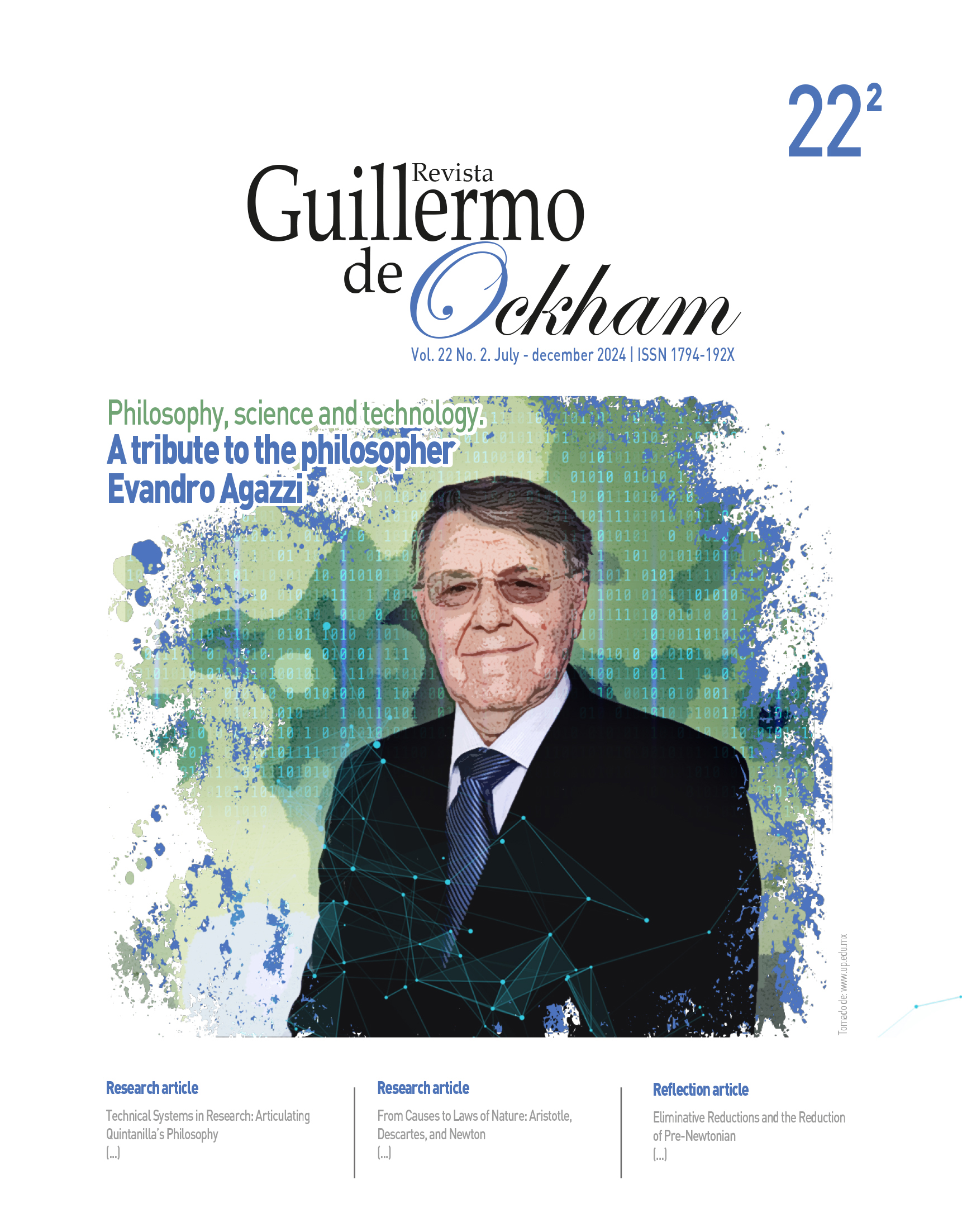The Revista Guillermo de Ockham provides an immediate and open access to its content, based on the principle of offering the public a free access to investigations to provide a global interchange of knowledge.
Unless otherwise established, the contents of this journal has a license with Creative Commons Attribution-NonCommercial-NoDerivatives 4.0 International (CC BY-NC-ND 4.0) http://creativecommons.org/licenses/by-nc-nd/4.0/
- Attribution: You must give appropriate credit, provide a link to the license, and indicate if changes were made. You may do so in any reasonable manner, but not in any way that suggests the licensor endorses you or your use.
- NonCommercial: You may not use the material for commercial purposes.
- NoDerivatives: If you remix, transform, or build upon the material, you may not distribute the modified material.
- No additional restrictions: You may not apply legal terms or technological measures that legally restrict others from doing anything the license permits.
Abstract
In the last decades, two proposals have emerged in the philosophy of science regarding scientific models and their representational function. According to one of them, scientific models are subsumed under the category of epistemic representations. According to the other, scientific models are subsumed under the category of representations-as. This article proposes that there is an extensional equivalence between epistemic representations and representations-as. This thesis is defended by arguing that the necessary and sufficient conditions that determine representations-as are those that explain how surrogative, which is the symptom used in the literature to define epistemic representations, is possible. One consequence of this thesis is that the acceptance of one of the proposals about scientific models and their representational function implies the acceptance of the other. Another consequence, and its main advantage, is offering a proposal about how epistemic representations are possible.
Keywords:
References
Bolinska, A. (2013). Epistemic representation, informativeness and the aim of faithful representation. Synthese, 190, 219-234. doi.org/10.1007/s11229-012-0143-6
Callender, C., y Cohen, J. (2006). There is no problem of scientific representation. Theoria, 21(1), 67-85. https://doi.org/10.1387/theoria.554
Contessa, G. (2007). Scientific representation, interpretation, and surrogative reasoning. Philosophy of Science, 74(1), 48-68. https://doi.org/10.1086/519478
Contessa, G. (2011). Scientific models and representation. En S. French y J. Saatsi (Eds.), The Continuum companion to the philosophy of science (pp. 120-137). Continuum.
Contessa, G. (2013). Models and maps: An essay on epistemic representation (manuscrito no publicado). Carleton University. https://philpapers.org/rec/CONMAM-9
Elgin, C. Z. (1983). With reference to reference. Hackett.
Elgin, C. Z. (2009). Exemplification, idealization, and scientific understanding. En M. Suárez (Ed.), Fictions in science: Philosophical essays on modeling and idealization (pp. 77-90). Routledge.
Elgin, C. Z. (2010). Telling instances. En R. Frigg y M. C. Hunter (Eds.), Beyond mimesis and convention: Representation in art and science (pp. 1-18). Springer.
Frigg, R. (2006). Scientific representation and the semantic view of theories. Theoria, 21(1), 49-65. https://doi.org/10.1387/theoria.553
Frigg, R., y Nguyen, J. (2017). Scientific representation is representation-as. En H. K. Chao y J. Reiss (Eds.), Philosophy of science in practice (pp. 149-179). Springer.
Goodman, N. (1968). Languages of art. The Bobbs-Merrill Company.
Goodman, N. (1984). Of mind and other matters. Harvard University Press.
Hughes, R. I. G. (1997). Models and representation. Philosophy of Science, 64, S325-S336. https://www.jstor.org/stable/188414
Koyré, A. (1977). Estudios de historia del pensamiento científico (E. Pérez Cedeño y E. Bustos, Trads.). Siglo XXI.
Nguyen, J. (2016). How models represent [Tesis doctoral, London School of Economics and Political Science]. London School of Economics and Political Science. http://etheses.lse.ac.uk/3527/1/Nguyen_how_models_represent.pdf
Racines Correa, J. I. (2020). Modelos y representación científica: denotación, ejemplificación, interpretación y atribución [Tesis doctoral, Universidad del Valle]. Biblioteca Digital. https://bibliotecadigital.univalle.edu.co/handle/10893/19989
Racines Correa, J. I. (2022). Problemas filosóficos para una teoría de la representación científica. Discusiones Filosóficas, 23(41), 59-80. https://doi.org/10.17151/difil.2022.23.41.4
Suárez, M. (2003). Scientific representation: Against similarity and isomorphism. International Studies in the Philosophy of Science, 17, 225-244.
Swoyer, C. (1991). Structural representation and surrogative reasoning. Synthese, 87, 449-508. https://doi.org/10.1007/BF00499820
































